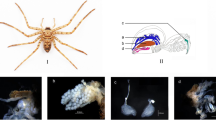Abstract
Methods currently used for the identification of the species to confirm the origin of meat or white tissue samples have not been validated for identification of different classes of vertebrates used for meat production, such as fishes, mammals and birds. Here, we describe an improved method for extraction, detection and differentiation of meat species using a single set of primers—for mitochondrial cytochrome-b gene by a polymerase chain reaction-restriction fragment length polymorphism (PCR-RFLP) based procedure—to detect adulteration in meat. The work compared three different methods (viz., salt precipitation, silica column based extraction & chloroform-phenol extraction) for extracting total genomic DNA. Of the three methods, salt precipitation and silica column based extraction was found better in terms of extraction efficiency and ease of handling as compared to the standard method of chloroform-phenol extraction which is laborious. To confirm the effectiveness and specificity of the cytochrome-b gene fragment, we tested nine genomic DNA samples (extracted from different aquatic species as well as other meat samples) and obtained positive results. Using this method, adulteration of meat (aquatic or otherwise) up to 0.01 % in case of raw meat; and, minimum of 1 % adulteration in case of cooked and processed meat mixtures could be detected. In conclusion, specific PCR-RFLP method resulting in an amplicon of size 360 bp of a short segment of cytochrome-b gene seems to be a powerful technique for the identification of adulteration in raw, cooked and/or processed meat products because of its simplicity, specificity and sensitivity.




Similar content being viewed by others
References
Al-Dughaym AM, Altabari GF (2010) Safety and quality of some chicken meat products in Al-Ahsa markets-Saudi Arabia. Saudi J Biol Sci 17:37–42
Bottero MT, Civera T, Nucera D, Turi RM (2003) Design of universal primers for the detection of animal tissues in feedstuff. Vet Res Commun 27:667–669
Calvo JH, Rodellar C, Zaragoz P, Osta R (2002) Beef and bovine-derived material identification in processed and unprocessed food and feed by PCR amplification. J Agric Food Chem 50:5262–5264
Esa YB, Japning JRR, Rahim KAA, Siraj SS, Daud SK, Tan SG, Sungan S (2012) Phylogenetic relationships among several freshwater fishes (Family: Cyprinidae) in Malaysia inferred from partial sequencing of the cytochrome b mitochondrial DNA (mtDNA) gene. Pertanika J Trop Agric Sci 35:307–318
Hsieh H-S, Chai T-J, Hwang D-F (2007) Using the PCR–RFLP method to identify the species of different processed products of billfish meats. Food Control 18:369–374
Kumar RB, Kalaikannan A, Radhakrishnan KT (2007) Studies on processing and shelf life of pork nuggets with liquid whey as a replacer for added water. Am J Food Technol 2:38–43
Lin W-F, Hwang D-F (2008) A multiplex PCR assay for species identification of raw and cooked bonito. Food Control 19:879–885
Miller SA, Dykes DD, Polesky HF (1988) A simple salting out procedure for extracting DNA from human nucleated cells. Nucleic Acids Res 16:1215
Nathaniel CC, Stelick S, Batt CA (2003) Nucleic acid purification using microfabricated silicon structures. Biosens Bioelectron 19:59–66
Rehbein H (1990) Electrophoretic techniques for species identification of fishery products. Z Lebensm Unters Forsch 191:1–10
Salah M, Janabi A, Martinez I (1997) Universal and rapid salt-extraction of high quality genomic DNA for PCR-based techniques. Nucleic Acids Res 25:4692–4693
Sambrook J, Fritsch EF, Maniatis T (2006) Molecular cloning, a laboratory manual. Cold Spring Harbor Laboratory Press, New York
Sharma A, Kumar S, Sharma N, Sharma D (2013) PCR-RFLP of 16S rRNA gene for identification of speciation of meat of porcine origin in processed and admixed meat. In: Sabu A, Augustine A (eds) Prospects in biosci addressing the issues. doi:10.1007/978-81-322-0810-5_6
Sinclair AJ, Slattery WJ (1982) Identification of meat according to species by isoelectric focusing. Aust Vet J 58:79–80
Tamura K, Dudley J, Nei M, Sudhir K (2007) MEGA4: molecular evolutionary genetics analysis (MEGA) software version 4.0. Mol Biol Evol 24:1596–1599
Thompson JD, Toby Gibson J, Plewniak F, Jeanmougin F, Higgins DG (1997) The CLUSTAL_X windows interface: flexible strategies for multiple sequence alignment aided by quality analysis tools. Nucleic Acids Res 25:4876–4882
Yap FC, Yan YJ, Loon KT, Zhen JLN, Kamau NW (2010) Phylogenetic analysis of different breeds of domestic chickens in selected area of Peninsular Malaysia inferred from partial cytochrome b gene information and RAPD markers. Anim Biotechnol 21:226–240
Acknowledgments
Authors acknowledge the National Fisheries Development Board (NFDB), Govt. of India for partial funding of this work. Thanks to Dr Sangeetha RK for her corrections on English usage. Authors thank Director, CSIR-CFTRI for permission to publish this work.
Conflict of interest
All the authors declare that they have no conflict of interest of whatsoever nature.
Author information
Authors and Affiliations
Corresponding author
Rights and permissions
About this article
Cite this article
Muhammed, M.A., Bindu, B.S.C., Jini, R. et al. Evaluation of different DNA extraction methods for the detection of adulteration in raw and processed meat through polymerase chain reaction—restriction fragment length polymorphism (PCR-RFLP). J Food Sci Technol 52, 514–520 (2015). https://doi.org/10.1007/s13197-013-1024-9
Revised:
Accepted:
Published:
Issue Date:
DOI: https://doi.org/10.1007/s13197-013-1024-9




